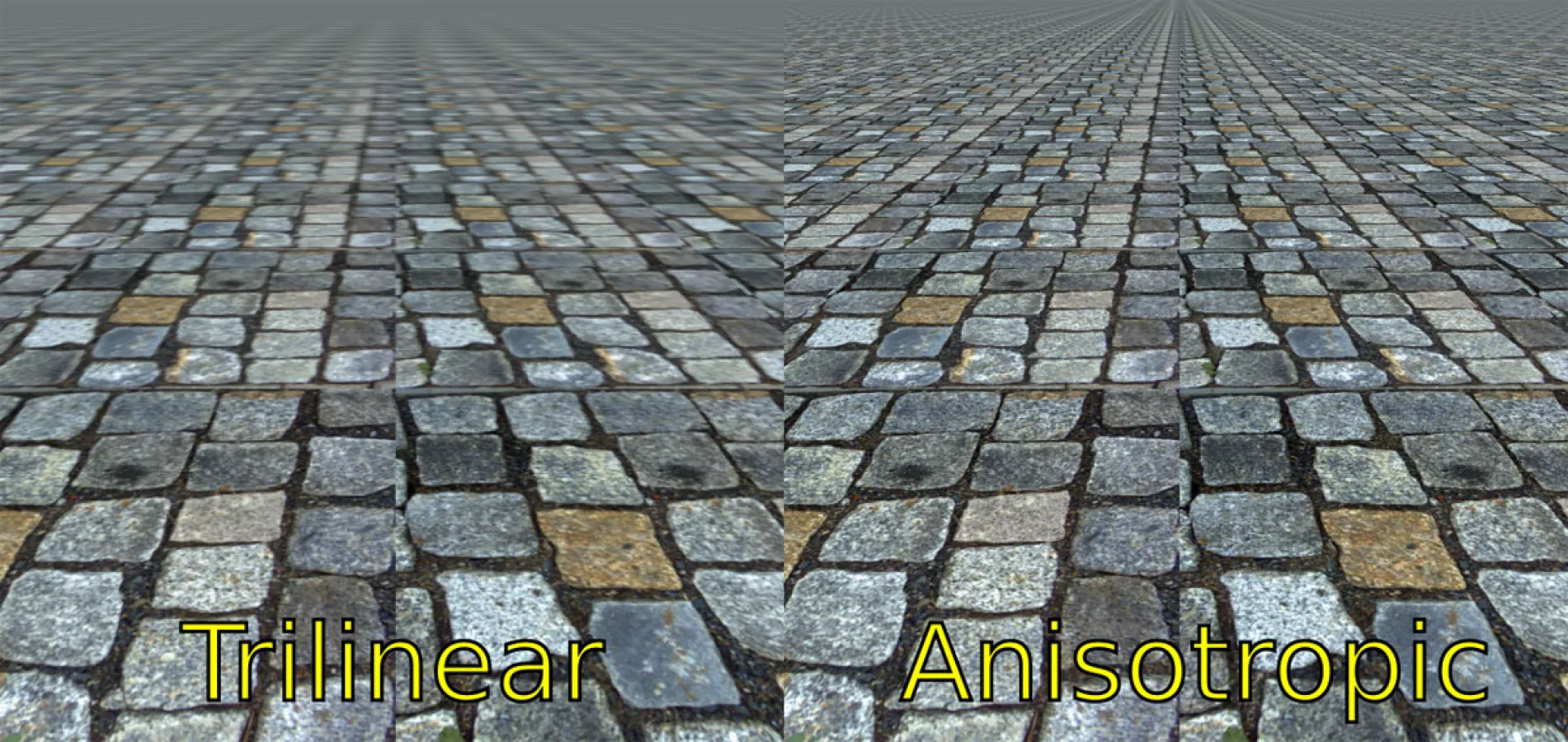Anisotropic Filtering
Anisotropic Filtering is a type of texture filtering (see: Texture Fill-Rate) that is often listed alongside bilinear and trilinear filtering techniques. Texture filtering is a process through which game graphics are modified to improve smoothness of objects and ensure textures are proportionate to the screen's viewing angle. For example, a road leading to a vanishing point would require a more trapezoidal application of textures to the surface to ensure the road's dashed lines are not skewed with viewing distance (if using a square or oblique application).

(Image source: Wikimedia Commons; User: Thomas; Lampak derivative).
Anisotropic filtering (AF) does not uniformly filter textures, instead filtering textures (processing textures for correct viewing angle drawing) dependent upon each texture's location on the screen relative to the camera angle. AF also assist in smoothing the edges of 3D objects by sampling textures a user-defined amount of times per pixel, ultimately determining how a pixel should appear based on this data. This is different from anti-aliasing in result, but similar in top-level concept insofar as the pixel sampling approach. AF can reduce blur and increase detail sharpness at steeper viewing angles.
Anisotropic filtering will take multiple samples per texel to determine the best appearance for the current situation. An anisotropic filtering setting of 16x (“16-tap”) means the GPU will collect 16 samples per texel, a process that becomes VRAM-intensive.
See Also
- Anti-Aliasing
- Framebuffer
- Texture Fill-Rate
- TMUs
Read More
Related Products